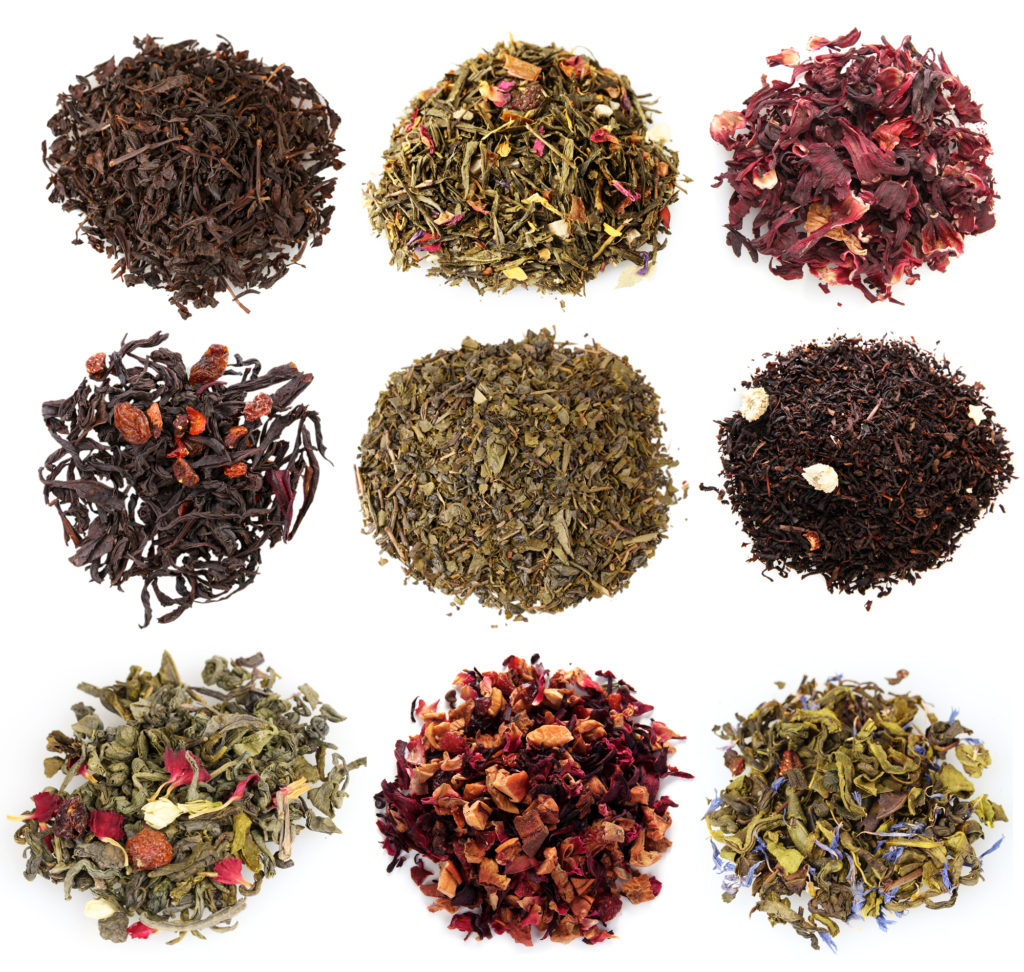
Everyone knows herbs and spices make your food taste better, but did you know that they also have a lot of health benefits? In this article I will go over the best herbs and spices for health, the best herbs and spices for cooking, the most common methods to prepare herbs medicinally, and the most common categories of how herbs are beneficial for your health.
At the end I will give you my favorite resources for herbs and spices so you can dive deeper into the world of herbalism if you are interested.
I am a huge fan of herbs and spices so I’m a bit surprised at myself that I haven’t written an article about them yet. I have a whole lesson on them in my online course Holistic Lifestyle Basics (which also includes a pdf version of my book where this information is pulled from), but have never given out any free information on them until now.
Audio/Podcast version:
Table of Contents
Introduction To Herbalism
Herbs can be used in cooking or for health purposes, such as to make essential oils or tea. Herbs have medicinal properties, and they grow in nature, so it makes sense to use herbs in your diet. Many pharmaceutical drugs are derived from plants; however, they extract only parts of the plant, so you are not getting the plant as a whole as nature intended.
There is at least one herb for every ailment. However, herbs shine best when used for prevention purposes. They have a more subtle effect. This is why most herbs aren’t useful for emergencies. Basically, though, herbs are one of the best natural ways to prevent chronic health issues.
There are two ways to use herbs. Generally, an herb is either used in cooking (along with spices) or used medicinally either in the prevention of disease or to treat an illness. Many herbs can be used for both. Some work better to eat, and some work better to drink as a tea.
Here are some basic methods and instructions for using herbs:
Tea
1-2 TBS dried herbs
1-2 C boiling water
Let steep until it cools off enough to drink
Best for daily use of herbs for general health
Infusion
1 OZ. dried herbs
1 QT. boiling water
Let sit in a mason jar, covered, for many hours, preferably overnight
Best for daily herbs for general health, and preventative and maintenance purposes. Best for herbs that have highly volatile oils. Produces stronger flavor & extracts more of the constituents of the herbs.
Decoction
1 TB dried herbs (or 2 TB fresh herbs) for each cup of water
Use cold water to start
Place on heat
Boil, then simmer, covered, for up to 45 minutes.
Best for roots, barks, berries, and seeds of the plant.
Syrup
1 part already prepared decoction to 1 part honey (if this is too sweet, use more decoction, less honey)
Simmer over low heat until honey is dissolved (do not use high heat as this will destroy the beneficial properties of the honey!)
Let cool before bottling in a glass container. Store in the fridge. Stays good for a few months. Best for medicinal uses (cough syrup, immunity syrup). Elderberry syrup is the most common, used for colds and flus.
Elixir
No heat needed.
Fill glass jar 1/2 full of dried herbs, full if using fresh herbs.
Fill halfway with brandy, the rest of the way with honey. Stir well.
Cover, store for six weeks in a cool, dry place. Stir a few times a week.
After six weeks, strain out the herbs.
Best for medicinal uses.
Tincture
Fill herbs in glass container no more than 3/4 full (more if using fresh, less if using dried)
Fill container to the top with alcohol, most commonly vodka.
Use a plastic lid, or if using metal lid, put parchment paper on top of the herbs to keep the lid from corrosion.
Shake daily and make sure alcohol is still covering herbs. If not, add more alcohol.
After 6-8 weeks, strain herbs and store in a dark-colored glass container.
Best for medicinal uses.
Poultice
Used topically directly on the skin or through a thin mesh.
If using fresh herbs, crush finely. If using dry, mix with a little water to form a paste.
Use cold water (if necessary) for inflammation, hot water (if necessary) for increasing circulation.
Spread mashed herbs onto skin and wrap with a bandage. Or wrap herbs in muslin or gauze and secure onto the skin.
Best for skin irritations or localized pain.
Medicinal Categories of Herbs
In general, when looking for an herb for a specific ailment, you want to choose an herb according to its properties. Herbs used medicinally are a great preventative measure against chronic illnesses but should not be used by themselves for serious health issues. The herbs listed below are some of the most common ones for medicinal use.
In general, when looking for an herb for a specific ailment, you want to choose an herb according to its properties. Herbs used medicinally are a great preventative measure against chronic illnesses but should not be used by themselves for serious health issues. The herbs listed below are some of the most common ones for medicinal use.
Alterative
Normalizes the body, purifies the blood
Best for infections, cancer
Examples; Echinacea, Dandelion Root, Red Clover, Alfalfa, Calendula Flower, Ginseng, Licorice, Raspberry Leaf
Analgesic
Relieves pain
Examples; Chamomile, Lemongrass, Skullcap, Turmeric, Ginger, and Valerian.
Examples; Chamomile, Lemongrass, Skullcap, Turmeric, Ginger, and Valerian.
Antacids
Neutralizes acid in the stomach.
Examples; Dandelion Root, Slippery Elm Bark
Antispasmodics
Relieves muscle cramping
Examples; Cayenne Pepper, Chamomile, Skullcap, Lavender, Lemon Balm, Mullein Leaf, Nettle Leaf, Valerian
Astringents/Anti-Inflammatory
Constricts the tissues
Best for hemorrhoids and wound healing.
Examples; Aloe Vera, Calendula, Cayenne Pepper, Cinnamon, Dandelion Root, Mullein Leaf, Peppermint, Raspberry Leaf, Rosehips
Carminatives
Relieves intestinal pain and gas
Best for digestive issues
Examples; Astragalus, Ginger, Chamomile, Cinnamon, Cloves, Ginseng, Lemon Balm, Lemongrass, Valerian, Lavender
Demulcents
Soothes inflames tissues.
Best for digestive issues, sinus problems
Examples; Burdock, Ginseng, Marshmallow Root, Mullein Leaf, Slippery Elm Bark, Milk Thistle, Licorice, Oat Straw
Diuretics
Encourages urine flow.
Best for water retention, kidney stones, urinary infections
Examples; Astragalus, Elder Berries, Marshmallow, Nettle Leaf, Burdock, Dandelion, Oat Straw, Red Clover, Hawthorn Berry
Emollients
Soothes and softens the skin
Examples; Aloe Vera, Marshmallow Root, Slippery Elm Bark
Expectorants
Expels excess mucus
Examples; Mullein, Ginseng, Lemongrass, Licorice, Nettle Leaf, Slippery Elm Bark, Red Clover
Laxatives
Stimulate bowel movements
Examples Aloe Vera, Buckthorn, Slippery Elm, Marshmallow Root, Chamomile, Dandelion
Nervines
Calm the nerves
Examples; Chamomile, Hops, Passionflower, Lemon Balm, Skullcap, Valerian, Skullcap
Stimulants
Stimulate the nervous system, increase energy
Examples; Ginkgo Biloba, Cayenne Pepper, Cinnamon, Ginseng, Ginger, Ginkgo Biloba, Peppermint, Astragalus
Tonics
General invigoration for the whole body
Examples; Burdock, Dandelion Root, Ginseng, Hawthorn Berry, Alfalfa, Milk Thistle
I have a printable Medicinal Herb Reference Chart on Etsy that can help you use 15 of the most common herbs for healing! The image below will take you to Etsy if you want to check it out!
Best Herbs for Cooking
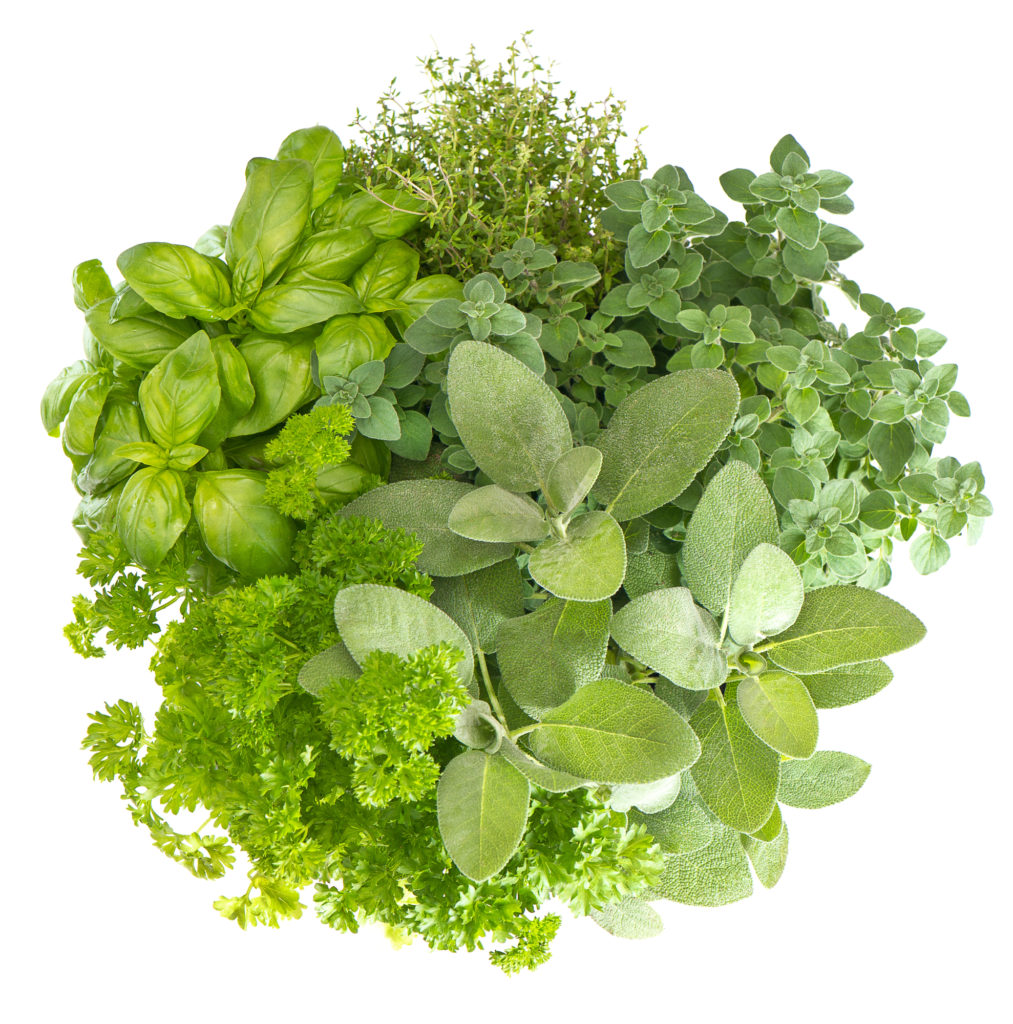
Basil
Fresh basil is just about one of the most fragrant and potent herbs out there. So always get fresh if you can. Basil is best with any type of Italian food, pizza, pasta, spaghetti, etc. It is best added last to keep the flavor strong.
Basil has been known to alleviate indigestion, fever, colds and flu, nausea, constipation, nervous disorders, muscle cramps, and kidney/urinary disorders.
Cilantro
Either you love cilantro, or you think it tastes like soap. There is actually a DNA-related reason for this, but if you love cilantro, you’re in luck! Cilantro is a must for Mexican cooking, being one of the main ingredients in salsa. It also goes really well with rice and lime juice and is used extensively in Indian cuisine. Like basil, cilantro is delicate, so don’t add this to cooked food until it is done. Cilantro is great for releasing toxins from the body.
Rosemary
Rosemary is usually bought dried or left to fully dry before using. It is great with chicken, potatoes, and bread. It is one of the best smelling herbs, even dried. Rosemary is best known for being good for the memory.
Oregano
Oregano is used around the world, most commonly in Italian cooking; pizza sauce, spaghetti sauce, etc. It is rich in antioxidants and has antibacterial and anti-inflammatory properties.
Thyme
Thyme has a wide variety of uses, including treating intestinal worms, bronchial problems, and diarrhea. It is most commonly used in Italian cooking. Like rosemary, thyme can withstand long cooking times.
Parsley
Parsley looks a lot like cilantro but has a more mild earthy flavor. It can be used on most foods, from vegetables to soups to fish to rice. It is very rich in Vitamin C. It is an antioxidant, and also protects against cancer and heart disease.
Sage
Along with rosemary and thyme, sage has many medicinal uses, including treating headaches, night sweats, diarrhea, and colds and flus. Sage is most commonly used to season wild game. It can also be drunk as a tea. In ancient times, it was thought to promote wisdom, which is probably where the term “wise old sage” comes from!
You can grow your own herbs, you can harvest them from the wild, or you can order them online. The ones you get online are, of course, dried, but sometimes they are your only option, especially in the wintertime. If you order them online, I highly recommend this site, Mountain Rose Herbs. They are one of the most recommended companies to get herbs from.
If you need a way to apply this information into your cooking, I have a handy reference chart for the 15 most common herbs! You can download it by clicking the image below, which will take you right to the listing on Etsy.
Spices 101
As the name implies, many of them are considered spicy, but not all. Spices can also be used in cooking or medicinally.
There are somewhere around 100 different spices in the world, and just like variety is the spice of life, let spices give variety to your food! Healthy eating doesn’t have to be flavorless!
Below are some of the most common spices that are good for your health.
Cayenne Pepper
The incredible thing about cayenne pepper is its ability to stop bleeding. It can actually be used directly on wounds and taken internally to prevent heart attacks. It is most commonly used in Mexican food or anything where you want a lot of kick.
Cinnamon
Cinnamon is warming, so it is good to drink as a tea as well as balancing out cold foods like fruits and desserts. It is useful to treat diarrhea, muscle cramps, indigestion, and gas.
Cumin
I’ve seen cumin described as a spice and an herb, but since it comes from the dried seed of the Cuminum cyminum plant, I’ll put that in the spice category. Cumin is used around most of the world, mostly in dishes like hummus, chutneys, lentils, chili, beans, and chicken. It is useful for eliminating and preventing gas, as well as being good for the heart.
Fennel
Fennel is actually a vegetable, with stalks that resemble celery. But the seeds are what are used as spices. They are a powerhouse of nutrients, minerals, antioxidants, and fiber. It is good for indigestion and relieving gas. Fennel seeds go well in breads, soups, meat, poultry, and sauces. You can also chew the seeds after a meal or add them to tea to help digestion and improve breath.
Ginger
Ginger is one of the best spices for digestive issues. It is also good for the circulation. It is excellent for colds, especially when used with honey and lemon. Ginger is a pretty strong flavor, and spicy, so it might take some getting used to if you aren’t already familiar with its taste. It is commonly drunk as a tea and also used to flavor fish, chicken, and many Asian foods.
Turmeric
Turmeric is widely known as the pungent yellow spice that is really good for you. More specifically, it contains curcumin, which is the active ingredient that gives it it’s antioxidant and anti-inflammatory powers. However, it has been proven if you take curcumin as a supplement along with black pepper, you will get much better absorption. It is most commonly used in curries and Indian foods.
I have a printable Culinary Spice Reference Chart, as well!
If you want to save money on these reference charts, I have a bundle available where you can get all 3 for a few dollars less! The image below will take you to download the bundle;
If you have a strong interest in herbs and spices, I highly recommend checking out Mountain Rose Herbs. They offer a lot of education on herbs, spices, oils, and many other natural products you can use for beauty or health purposes. I recently became an affiliate, and I made a video where I go over what you can find on their website and how to order herbs and spices from them.
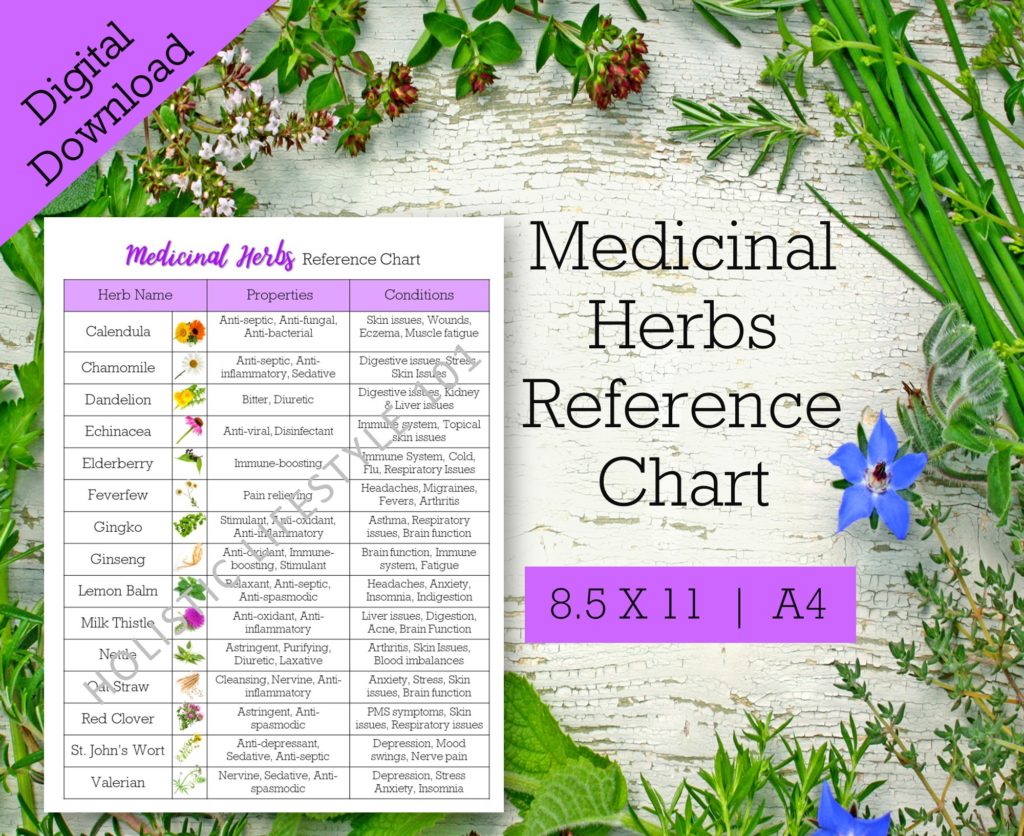
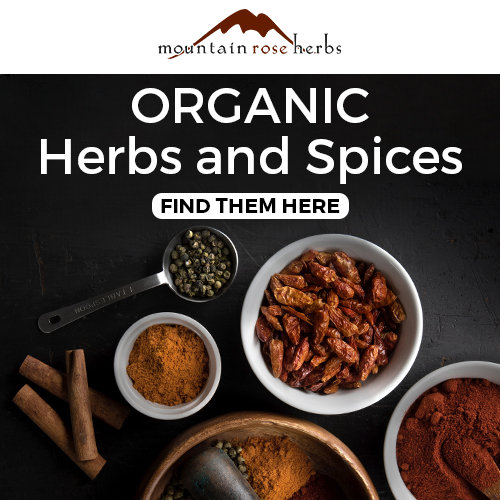
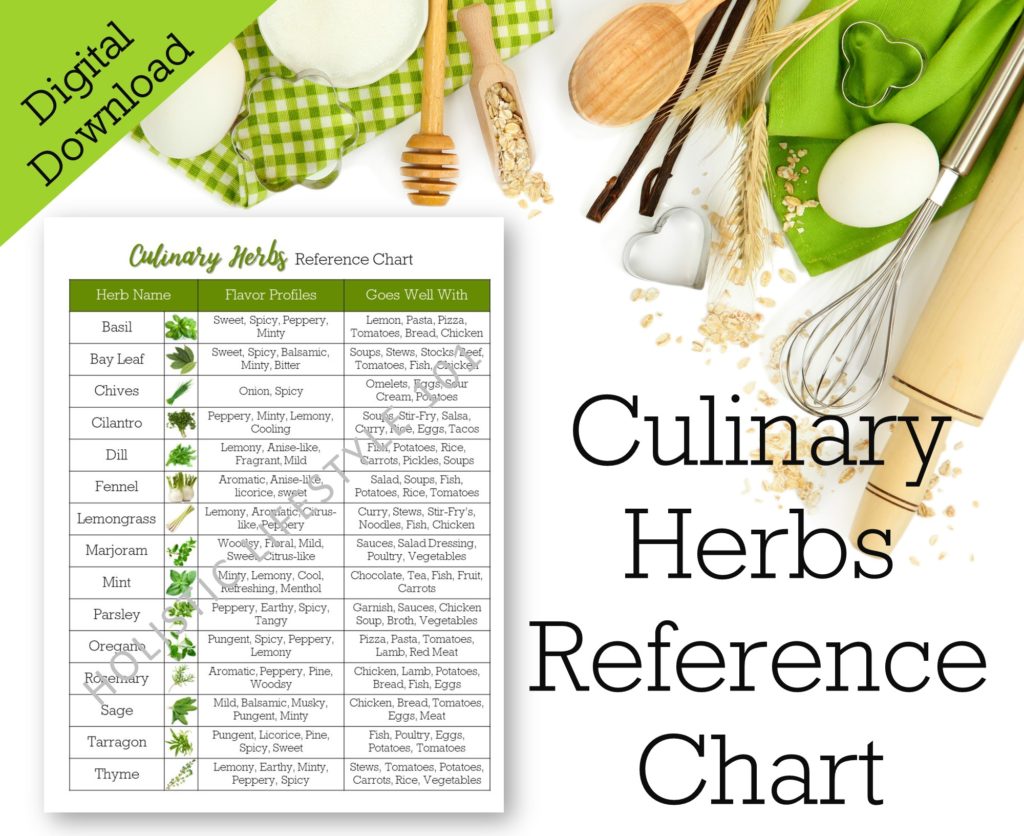


15 Comments
Comments are closed.